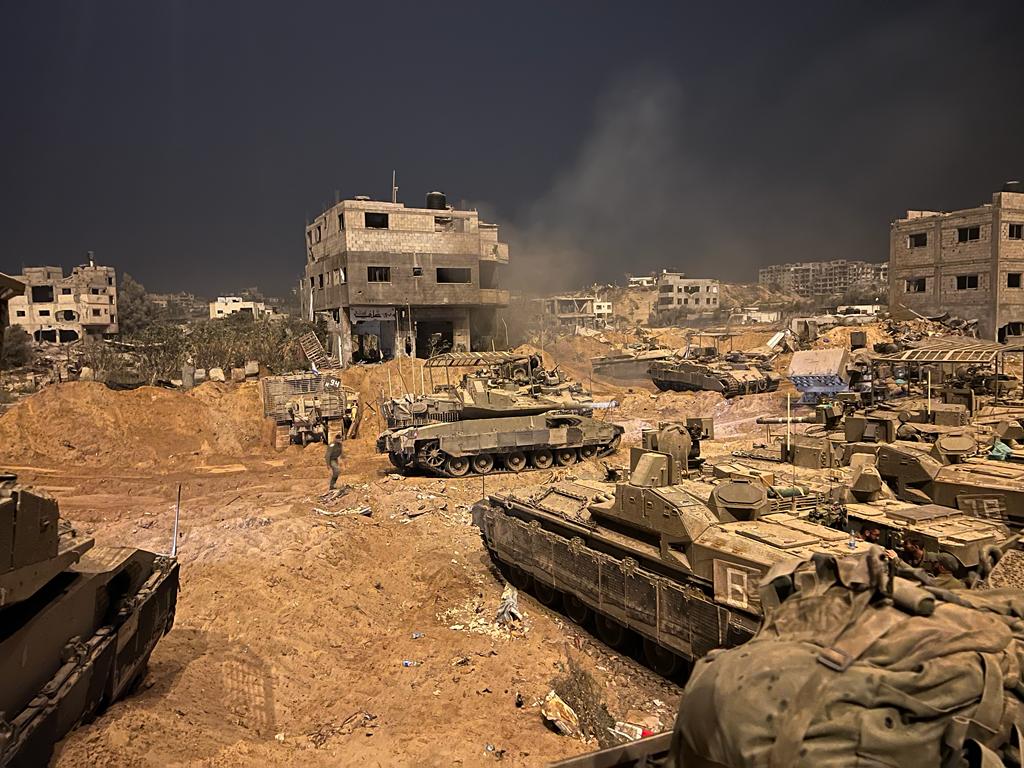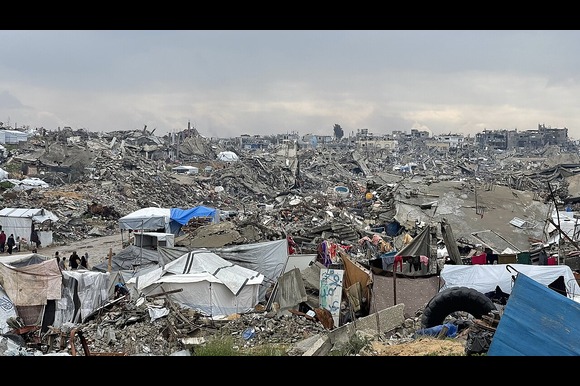
By IDF Spokesperson's Unit
Israel has continued to carry out air strikes and shootings across Gaza, raising alarm over the fate of its fragile ceasefire deal with Hamas. The renewed violence comes as the United States intensifies diplomatic efforts to salvage the truce and prevent a return to full-scale conflict.
According to the Palestinian Civil Defence agency, four Palestinians were killed in two separate incidents “by Israeli gunfire as they were returning to check on their homes” in the al-Shaaf area, east of the Tuffah neighbourhood in eastern Gaza City. The Israeli military said it had fired on militants who crossed the so-called “yellow line” — a boundary designated under the ceasefire map shared by US President Donald Trump on October 4 — and approached troops in the nearby Shujayea area, “posing a threat” to Israeli soldiers.
The yellow line marks the limit behind which Israeli forces pulled back under the ceasefire arrangement with Hamas. However, residents say the boundary is not visible on the ground, creating confusion. “The whole area is in ruins. We saw the maps but we can’t tell where those lines are,” said Samir, 50, who lives in Tuffah.
Since the US-brokered truce came into effect on October 10, at least 97 Palestinians have been killed in scattered outbreaks of violence, according to Gaza health officials.
Accusations of “Blatant Breaches”
Both Israel and Hamas have accused each other of violating the ceasefire terms. On Sunday, Israeli air strikes killed 42 people, including several children, Gaza health authorities reported. Israel said the attacks were retaliation for a ceasefire violation by Hamas fighters, whom it claimed shot and killed two Israeli soldiers in Rafah.
Hamas denied any involvement, saying it had lost contact with its remaining units in Israeli-controlled areas of Rafah and was “not responsible for any incidents” there. One Hamas official accused Israel of fabricating “pretexts” to resume the war.
The group said it was continuing to hand over the remains of Israeli captives held in Gaza, though it faced “major challenges because of the extensive destruction” across the territory. The Israeli Prime Minister’s Office confirmed on Monday that the Red Cross had transferred the body of a 13th deceased Israeli captive from Hamas to the Israeli military.
On Sunday, Israel had threatened to suspend humanitarian aid deliveries into Gaza, though it later announced that it was once again enforcing the ceasefire.
Humanitarian Access and Continued Air Strikes
United Nations spokesperson Stéphane Dujarric confirmed that aid deliveries had resumed but declined to specify the volume of supplies entering Gaza. However, Al Jazeera correspondent Tareq Abu Azzoum reported on Monday that Israel was still blocking the entry of humanitarian convoys.
“Several military checkpoints are preventing aid trucks from entering, and these vehicles are packed with vital humanitarian supplies,” Abu Azzoum said.
He added that Israeli forces had struck the eastern areas of Khan Younis earlier in the day, sparking fears that the truce would collapse. UNRWA chief Philippe Lazzarini urged all parties to respect the ceasefire, posting on X: “The fragile ceasefire in #Gaza must be upheld.” He also called for investigations into what he described as “blatant breaches” of international humanitarian law.
US Envoys Arrive to Rescue Ceasefire Deal
Amid the escalating tensions, two of President Trump’s envoys arrived in Israel on Monday to help stabilize the ceasefire. Trump’s special envoy, Steve Witkoff, and his son-in-law, Jared Kushner, met with Israeli Prime Minister Benjamin Netanyahu, according to an Israeli government spokesperson.
US Vice President JD Vance and Second Lady Usha Vance are also scheduled to visit Israel on Tuesday for further talks with Netanyahu aimed at reinforcing the truce.
The next phase of the ceasefire deal is expected to focus on the disarmament of Hamas, the phased withdrawal of Israeli forces from additional areas in Gaza, and the establishment of an internationally backed “board of peace” to govern the devastated enclave.
Egyptian Mediation and Hamas Resistance
Egypt hosted talks in Cairo on Monday with senior Hamas official Khalil al-Hayya to discuss implementation of the ceasefire’s terms, Hamas said in a statement. However, the group and its allied factions continue to reject any foreign administration of Gaza, as outlined in the Trump plan, and have resisted calls to lay down their weapons.
This opposition could complicate efforts to move the ceasefire process forward.
Trump Blames Hamas, Warns of Consequences
When asked about maintaining the Israel-Hamas truce, President Trump appeared to place responsibility on Hamas for recent violations, suggesting the group was facing internal dissent. “They have to be good, and if they’re not good, they’ll be eradicated,” he said.
Trump added that any future actions would not involve deploying US troops on the ground.
Since the ceasefire took effect, Hamas security forces have returned to Gaza’s streets, clashing with other armed factions and killing suspected criminals. Last week, Trump remarked that Hamas had “taken out a couple of gangs that were very bad; very, very bad gangs,” adding, “And that didn’t bother me much, to be honest with you. That’s OK.”




